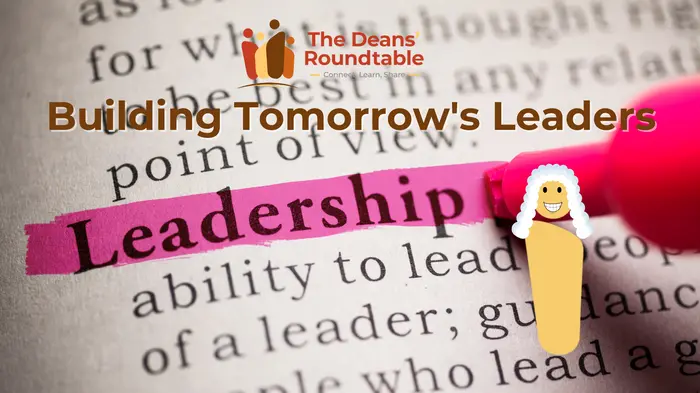Spring Leadership Programs: 8 Innovative Approaches for K-12 Students
Spring is the perfect time to launch leadership programs that cultivate essential skills in K-12 students. As the academic year begins winding down, introducing leadership initiatives can reinvigorate student engagement and build foundations for the following year.
From traditional student government to creative non-traditional approaches, spring leadership programs provide structured frameworks for developing young leaders while creating a supportive school environment.

Why Spring Leadership Programs Matter in K-12 Schools
Spring leadership programs address common school challenges like attendance issues, academic struggles, and social-emotional development. These programs create accessible role models for younger students while developing leadership capabilities in older ones.
Research shows effective spring leadership initiatives provide numerous benefits:
Boosted attendance for participating students
Enhanced academic achievement
Improved college and career readiness skills
Stronger social-emotional development
Greater sense of community connection
7 Essential Skills to Develop in Spring Leadership Programs
Successful spring leadership programs focus on developing a core set of interpersonal skills that serve students throughout their educational and professional journeys:
1. Communication
Clear communication forms the foundation of any leadership role. Effective spring leadership programs teach students to articulate ideas clearly while adapting their communication style to different audiences.
2. Active Listening
Beyond just hearing words, active listening involves understanding what’s being communicated through verbal and non-verbal cues. Spring programs that emphasize this skill create safe spaces where students feel truly understood.
3. Empathy
Understanding others’ perspectives is crucial for effective leadership. Spring leadership programs that emphasize empathy help students connect on a deeper level, creating supportive environments where everyone feels valued and respected.
4. Conflict Resolution
Every relationship faces challenges. Spring leadership programs approach conflicts as growth opportunities, teaching strategies like active listening, problem-solving, and compromise to find mutually beneficial solutions.
5. Collaboration
Working effectively with others is fundamental to successful leadership. Spring programs develop collaboration skills through planning activities and working alongside other student leaders.
6. Adaptability
The ability to adjust approaches based on changing circumstances is vital in leadership roles. Each situation requires leaders to remain flexible and responsive—a key focus in spring development programs.
7. Cultural Competence
Understanding and respecting different cultural backgrounds creates inclusive environments. Building cultural competence helps student leaders connect with diverse peers and prepares them for increasingly diverse college and work settings.
8 Innovative Spring Leadership Approaches
1. Reimagined Student Government
Traditional student government can be transformed with fresh approaches:
Participatory Budgeting: Give students real decision-making power over a portion of the school budget
Committee-Based Structure: Replace traditional positions with issue-focused committees that allow more students to participate
Cross-Grade Representation: Ensure voices from all grade levels are included in decision-making
Digital Engagement: Use technology to gather input from the entire student body
Rotating Leadership: Implement term limits and rotation schedules to involve more students
2. Peer Mentoring Programs
Peer mentoring creates valuable leadership opportunities while supporting younger students:
Pair older students with younger ones for academic and social support
Create structured training for mentors in communication and coaching
Establish regular check-ins and feedback systems
Celebrate mentorship successes with recognition events
3. Student-Led Community Service Initiatives
Spring is ideal for launching service projects:
Environmental cleanup campaigns
Food or clothing drives
Community garden projects
Intergenerational programs with local senior centers
Fundraising for local causes
4. Project-Based Leadership Teams
Form temporary leadership teams around specific school projects:
Spring festival planning committees
End-of-year celebration organizers
School improvement task forces
Wellness initiative coordinators
Technology innovation teams
5. Student Ambassador Programs
Develop students who represent the school to visitors and new families:
Train student tour guides
Create welcome committees for new students
Develop peer orientation leaders
Establish cultural exchange ambassadors
6. Leadership Through Arts and Athletics
Recognize and develop leadership in non-academic settings:
Drum majors and section leaders in music
Team captains with leadership training
Student directors for theater productions
Gallery curators for student art exhibitions
Student choreographers for dance performances
7. Entrepreneurship and Innovation Labs
Create spaces where students can develop leadership through creative problem-solving:
Student business incubators
Design thinking workshops
Social entrepreneurship programs
Maker spaces with student leaders
Innovation challenges addressing school issues
8. Digital Leadership Initiatives
Develop leadership skills for the digital age:
Social media management teams
Student tech support squads
Digital citizenship ambassadors
Podcast and video production crews
Website and blog editorial teams
How to Structure Spring Leadership Programs
For spring leadership programs to succeed, schools must provide comprehensive support:
Structured Training: Provide formal training in the seven key skills outlined above
Regular Supervision: Offer ongoing guidance from adult coordinators
Peer Support Networks: Create opportunities for student leaders to learn from each other
Reflection Opportunities: Encourage students to analyze their experiences and growth
Recognition Systems: Acknowledge students’ contributions and achievements
College Application Benefits
Colleges recognize the value of spring leadership program experience. Students who participate demonstrate:
Commitment to serving their community
Ability to take initiative and lead
Strong interpersonal and communication skills
Capacity for empathy and understanding
Experience building positive relationships
Getting Started with Spring Leadership Programs
Schools interested in implementing spring leadership programs should:
Identify specific needs within the school community
Select appropriate leadership models based on student interests
Develop a structured training curriculum
Create clear program objectives and expectations
Establish evaluation metrics
Plan recognition events for program completion
Spring leadership programs create powerful development opportunities while addressing important needs within the school community. By focusing on essential leadership skills and implementing innovative approaches, schools can build student capacities that translate to academic success, college readiness, and lifelong leadership potential.
Has your school implemented innovative spring leadership programs? What approaches have worked best for your students?
Bridget Johnson
Discover the new Deans’ Roundtable Student Life Assessment Tool
(Accepting Founding Schools for a limited time only)
Want more support as a student life professional?
Look no further than the Deans' Roundtable Community
- Network with a vast directory of student life professionals like yourself
- Gain a multitude of professional development opportunities to be the best version of yourself
- Gather expert advice on the important questions you need answered

